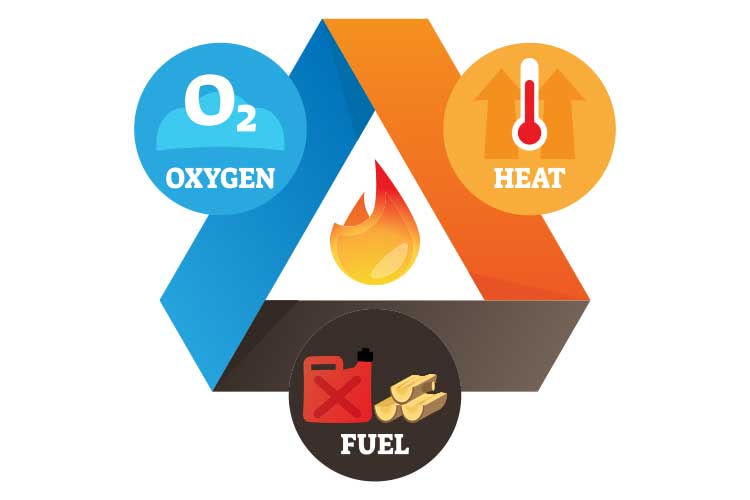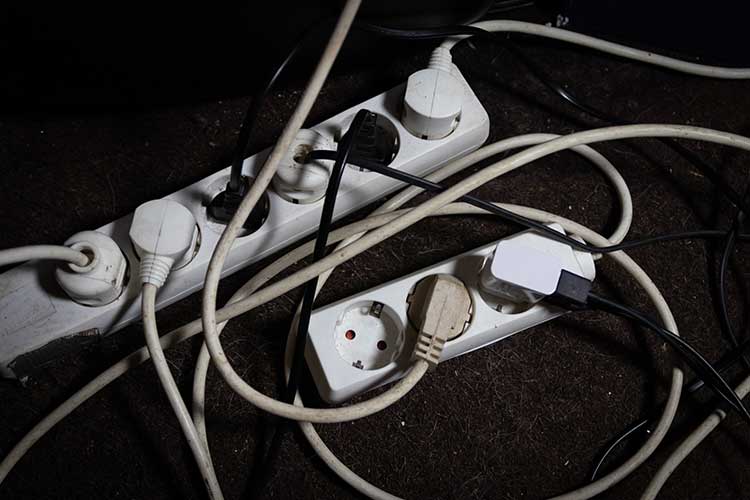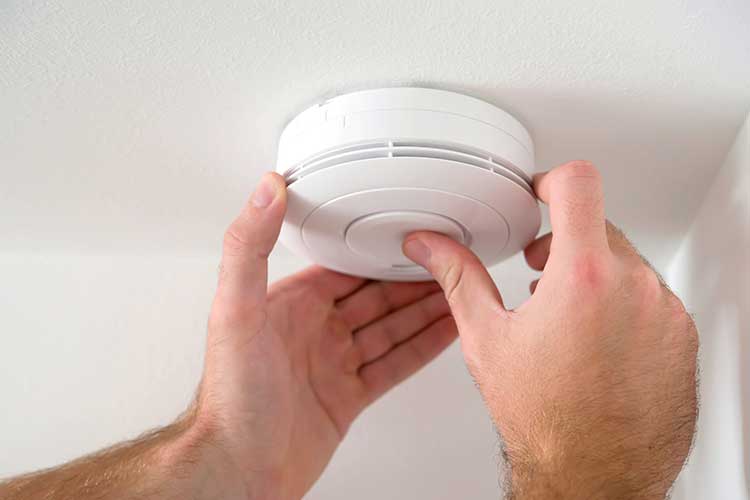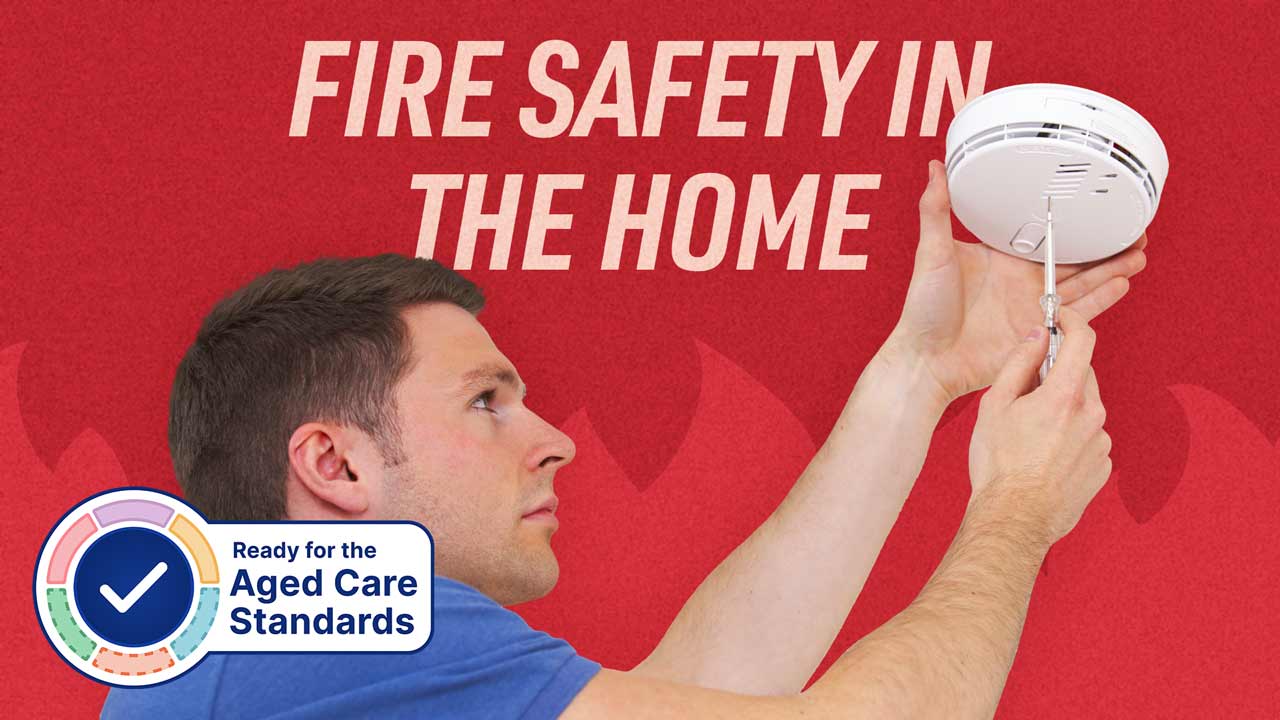Most fatal house fires are preventable (Queensland Government 2021). Do you know how to stay safe while caring for clients in their homes?
In order to prevent harm, serious injury or death from fire, you must be able to identify and address fire hazards or risks in clients’ homes. Furthermore, clients should be adequately educated on how to minimise fire hazards and respond to an emergency situation.
If a client is appearing to have difficulty keeping their home environment safe, this may indicate that the client is not suitable to remain at home and alternative arrangements may need to be considered.
Fire Safety in a Client’s Home Under the Strengthened Aged Care Quality Standards
Standard 4: The Environment - Outcome 4.1a: Environment and equipment at home under the strengthened Aged Care Quality Standards (Action 4.1.1a) requires aged care providers delivering care and services in a client’s home to recognise and mitigate any environmental risks to an older person’s safety, such as fire hazards (ACQSC 2024).
Why are Older Adults and People Living With Disability at Greater Risk?
Older adults and people living with disability are at increased risk of mortality or injury from house fires, with older adults over 65 accounting for almost half of house fire fatalities (SAMFS 2022; Fire and Rescue NSW 2023a).
There are a variety of reasons why older adults and people living with disability are more vulnerable to fire threats, including:
- Lack of understanding in regard to their own level of risk
- Being less physically or mentally able to withstand fires and related hazards
- Reduced mobility
- Sensory impairment (reduced vision or hearing)
- General frailty
- Injury
- Illness
- Social isolation
- Cognitive or physical impairment.
(Cassidy et al. 2021)
Basic Principles of Fire

An essential component of fire safety and risk assessment is basic knowledge about how fires start and spread, and how they can be extinguished.
There are three main reasons (excluding arson) why fires start: apathy, ignorance and carelessness. These can generally be attributed to lack of fire safety knowledge, recklessness and failure to pay attention to small details. Appropriate fire education and being able to identify and respond to hazards is therefore crucial in fire prevention (DHHS 2018).
It is also important to remember the fire triangle of heat, oxygen and fuel. In order for combustion to occur, all three of these elements must be present. Removing one is the key to extinguishing a fire.
- Heat can be removed by cooling the combustible material, usually with water.
- Fuel can be removed by starving the fire, i.e. removing the combustible material or fuel (e.g. gas).
- Oxygen can be removed by smothering the fire with a dry powder, chemical extinguisher or fire blanket.
(DHHS 2018)
In the event of a fire, you must always ensure that the chosen extinguishing method is appropriate for the type of fire you are dealing with. For example, water must not be used to extinguish an electrical fire as this could result in electrocution (DHHS 2018).
Methods of Spreading
There are a number of ways in which fires can spread:
- Convection: When liquids and gases increase in temperature they expand, become lighter and rise, transmitting heat upwards.
- Conduction: Heat is transmitted through a material, igniting something combustible on the other side.
- Radiation: Heat waves are absorbed by other surfaces or materials.
- Direct burning: Flames make direct contact with fuel and ignite it.
(DHHS 2018)
Managing Fire Hazards Around the Home

Most house fires start in kitchens, bedrooms and lounge areas (Fire and Rescue NSW 2023b).
The following table lists common causes of fires around the home. When caring for a client in their home it is important to recognise and address any fire hazards that are present, and ensure the client is informed about potential risks.
Look out for these fire hazards:
| Type of Fire | Hazards |
|---|---|
| Kitchen fires |
|
| Power/appliance fires |
|
| Bedroom fires |
|
| Laundry fires |
|
| Living area fires |
|
(CFA 2021; QLD Fire and Emergency Services 2022; Fire and Rescue NSW 2023b)
Smoke Alarms
Smoke alarms are an integral component of fire safety in the home. Most fire fatalities can be attributed to a lack of working smoke alarms or poorly located smoke alarms (SAMFS 2022).
The following are recommendations for household smoke alarms:
- There should be at least one smoke alarm per floor.
- There should be a smoke alarm in each bedroom, as well as in living spaces (including hallways and stairways) and garages.
- Smoke alarms should be hard-wired and interconnected.
- Smoke alarms should be placed on the ceiling.
- Smoke alarms should not be placed in or near bathrooms and kitchens.
- Smoke alarms should be tested every month and vacuumed every six months.
- Batteries should be changed every year.
- Smoke alarms should be replaced every ten years, or according to the manufacturer’s instructions.
(Fire and Rescue NSW 2023c)

General Fire Safety Tips
The following tips will help reduce the risk of fire and ensure older adults and people living with disability are able to evacuate quickly if necessary.
- The client’s bedroom should ideally be close to the exit of the home.
- The client’s home should be kept free from clutter, especially bedrooms, pathways and doorways.
- Aids (e.g. glasses, walking frames) should be easily accessible in the bedroom at night.
- A mobile phone should be kept beside the client’s bed at night.
- Clients with personal alarms should wear them to bed.
- Doors should never be deadlocked when the client is home. Keys should be left in or near deadlocks.
- Any mobility difficulties in day-to-day life should be addressed, as these could impede on evacuation in an emergency.
- The client should consider assistance services if they are having difficulty performing certain tasks (e.g. cooking).
- Consider the installation of specialised smoke alarm systems for clients with hearing and mobility impairments.
- Medical oxygen should always be used in accordance with the supplier’s safety advice.
(CFA 2015; SAMFS 2022)
What to do if a Fire Occurs
As well as checking that the client’s home is safe and free from hazards, you should ensure the client is appropriately informed about what to do in an emergency situation.
It is important that the client has a well-formulated escape plan that outlines several evacuation routes. The client should familiarise themselves with their escape plan and keep it somewhere prominent (e.g. on the fridge) as a reminder. They should practice their escape plan at least twice per year (Fire and Rescue NSW 2023d).
In the event of an emergency, the client may be unable to evacuate due to mobility difficulties or other factors. The client should know what to do in this situation. Generally, the best option is to call triple zero (000), get down low on the floor, close the door of the room and place towels, bedding or clothes at the bottom of the door to prevent smoke from coming in (SAMFS 2022).
Conclusion
Clients who are receiving home care are often more at risk of harm from house fires due to age or disability. Ensuring that your clients are appropriately educated about fire safety and that their homes are free of fire hazards is essential in reducing the likelihood of injury or death from fire.
Test Your Knowledge
Question 1 of 3
How can oxygen be removed from a fire?
Topics
Further your knowledge
References
- Aged Care Quality and Safety Commission 2024, Standard 4: The Environment, Australian Government, viewed 9 May 2024, https://www.health.gov.au/resources/publications/strengthened-aged-care-quality-standards-august-2025?language=en/environment
- Cassidy, P, McConnell, N & Boyce, K 2021, ‘The Older Adult: Associated Fire Risks and Current Challenges for the Development of Future Fire Safety Intervention Strategies’, Fire and Materials, vol. 45, no. 4, viewed 25 August 2023, https://onlinelibrary.wiley.com/doi/full/10.1002/fam.2823
- Country Fire Authority 2015, Fire Safety for Older People and People With Disability, CFA, viewed 28 August 2023, https://www.aph.gov.au/DocumentStore.ashx?id=73fd91fa-44d4-465d-abae-96c6562439b3&subId=400062
- Country Fire Authority 2021, Home Fire Safety Checklist, Victoria State Government, viewed 25 August 2023, https://www.cfa.vic.gov.au/plan-prepare/fires-in-the-home/home-fire-safety-checklist
- Department of Health and Human Services 2018, Fire Safety Induction Program, Victoria State Government, viewed 25 August 2023, https://providers.dffh.vic.gov.au/fire-safety-induction-program-participant-manual
- Fire and Rescue New South Wales 2023d, Do You Have An Escape Plan?, New South Wales Government, viewed 28 August 2023, https://www.fire.nsw.gov.au/page.php?id=81
- Fire and Rescue New South Wales 2023b, Home Fire Safety Checklist, New South Wales Government, viewed 25 August 2023, https://www.fire.nsw.gov.au/page.php?id=289
- Fire and Rescue New South Wales 2023a, Seniors Fire Safety Factsheet, New South Wales Government, viewed 25 August 2023, https://www.fire.nsw.gov.au/page.php?id=298
- Fire and Rescue New South Wales 2023c, Smoke Alarms, New South Wales Government, viewed 28 August 2023, https://www.fire.nsw.gov.au/page.php?id=80
- Queensland Government 2021, Fire Safety at Home, Queensland Government, viewed 25 August 2023, https://www.qld.gov.au/emergency/safety/home/firesafety-home
- Queensland Fire and Emergency Services 2022, Indoor Fire Safety, Queensland Government, viewed 25 August 2023, https://www.qfes.qld.gov.au/safety-education/using-fire-indoors
- South Australian Metropolitan Fire Service 2022, The Elderly and People with Disabilities, Government of South Australia, viewed 25 August 2023, https://www.mfs.sa.gov.au/community/safety-and-education/fact-sheets-and-brochures/fact-sheet-pages/the-elderly-and-people-with-disabilities
 New
New 

